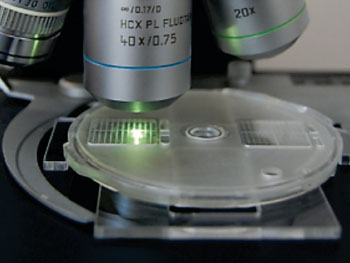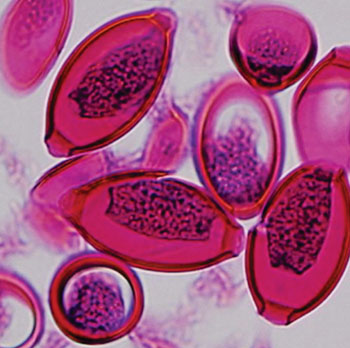Device Diagnostics of Fixed Soil-Transmitted Helminth Infection Assessed
By LabMedica International staff writers
Posted on 27 Apr 2015
Kato-Katz is a widely used method for the diagnosis of soil-transmitted helminth infection, but fecal samples cannot be preserved, and hence, should be processed on the day of collection and examined under a microscope within 60 minutes of slide preparation.Posted on 27 Apr 2015
The possibility of collecting fecal specimens in the field, adding a fixative, and analyzing the samples several days later in a central laboratory could overcome the time limitation of working on fresh samples, and hence improve the easiness and the quality of soil-transmitted helminthiasis diagnosis.
Scientists at the Swiss Tropical and Public Health Institute (Basel, Switzerland) and their colleagues enrolled 41 children and their stool samples were subjected on the day of collection to a single Kato-Katz thick smear and Mini-FLOTAC examination. Twelve aliquots of stool were fixed in 5% formalin and subsequently examined by Mini-FLOTAC up to 31 days after collection. The study was carried out in late 2013 on Pemba Island (Tanzania).
The combined results from Kato-Katz and Mini-FLOTAC revealed that 100% of children were positive for Trichuris trichiura, 85% for Ascaris lumbricoides, and 54% for hookworm. Kato-Katz and Mini-FLOTAC techniques found similar prevalence estimates for A. lumbricoides (85% versus 76%), T. trichiura (98% versus 100%), and hookworm (42% versus 51%). The mean eggs per gram of stool (EPG) according to Kato-Katz and Mini-FLOTAC was 12,075 and 11,679 for A. lumbricoides, 1,074 and 1,592 for T. trichiura, and 255 and 220 for hookworm, respectively. The mean EPG from day 1 to 31 of fixation was stable for A. lumbricoides and T. trichiura, but gradually declined for hookworm, starting at day 15.
The authors conclude that for a qualitative diagnosis of soil-transmitted helminth infection, stool samples can be fixed in 5% formalin for at least 30 days. However, for an accurate quantitative diagnosis of hookworm, they suggest a limit of 15 days of preservation. Their results have direct implication for integrating soil-transmitted helminthiasis into transmission assessment surveys for lymphatic filariasis. The study was published on April 7, 2015, in the journal Public Library of Science Neglected Tropical Diseases.
Related Links:
Swiss Tropical and Public Health Institute






 assay.jpg)




 Analyzer.jpg)




